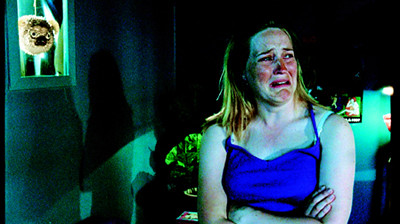
It looks like this week is going to be MoMA week at AFC. Today at The Reeler, I review Eija-Liisa Ahtila's new film The Wind, which is currently playing in the Media Theatre on the second floor of the MoMA, later on in the day I will discuss their Brice Marden retrospective, and finally, further into the week I will be publishing some thoughts on their greatly under reviewed exhibition, Eye On Europe.
So let's start with a little MoMA primer shall we? An excerpt from today's feature at The Reeler below:
There is something very strange about a narration of madness that remains lucid enough to sound vaguely reasonable. Much like Sylvia Plath’s novel The Bell Jar or The Yellow Wall Paper by Charlotte Perkins Gilman, the protagonist in Finnish video artist and photographer Eija-Liisa Ahtila's short three-screen film installation The Wind maintains a sympathetic relationship with the audience because her strange behavior is situated as both having evolved from a place of rationality and as a reaction to culturally imposed pressures we are all familiar with. “[I make] moving images of stories that have already happened” Ahtila said last month, aptly describing her work to The New York Times.
The statement speaks to the nature of storytelling itself as well as the artist's research, which involves funneling the experiences of women she has interviewed into her videos. After having seen Javier Téllez's 2004 film La Passion de Jeanne d'Arc, which features laborious monologues by 12 female psychiatric patients, I'm quite certain the process is more tedious than it is illuminating. But what separates The Wind from such films exploring female psychology and the cultural expectations that women be meek, body-conscious and sexually submissive, is not that it tells us something we don't already know, but rather that it sensitizes us to those expectations’ profound effects. In doing so, the artist creates a surprisingly complex portrait of female identity and the fractured psychology of the disturbed.
To read more click here.


Comments on this entry are closed.